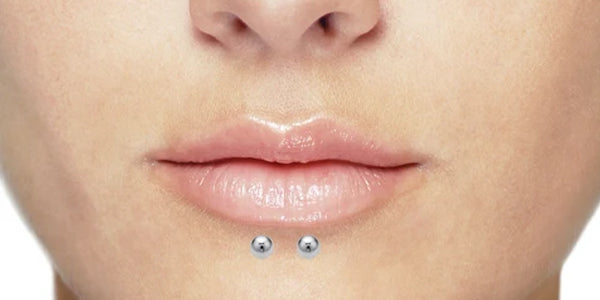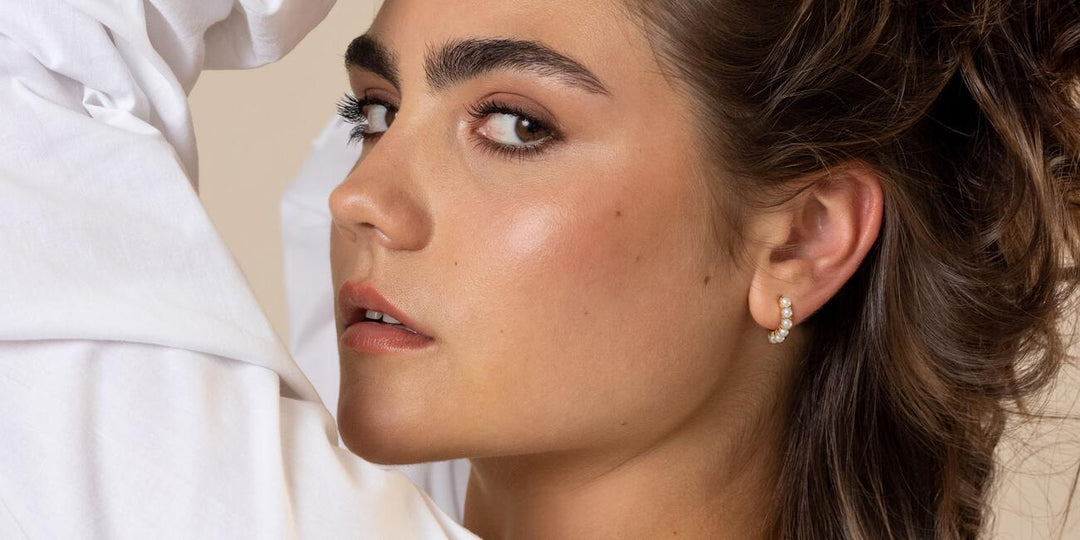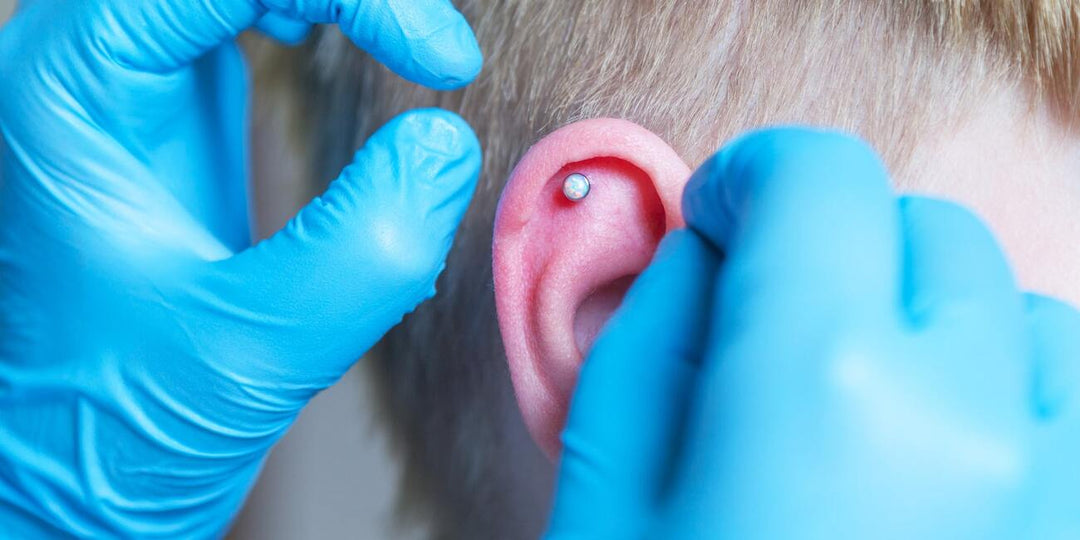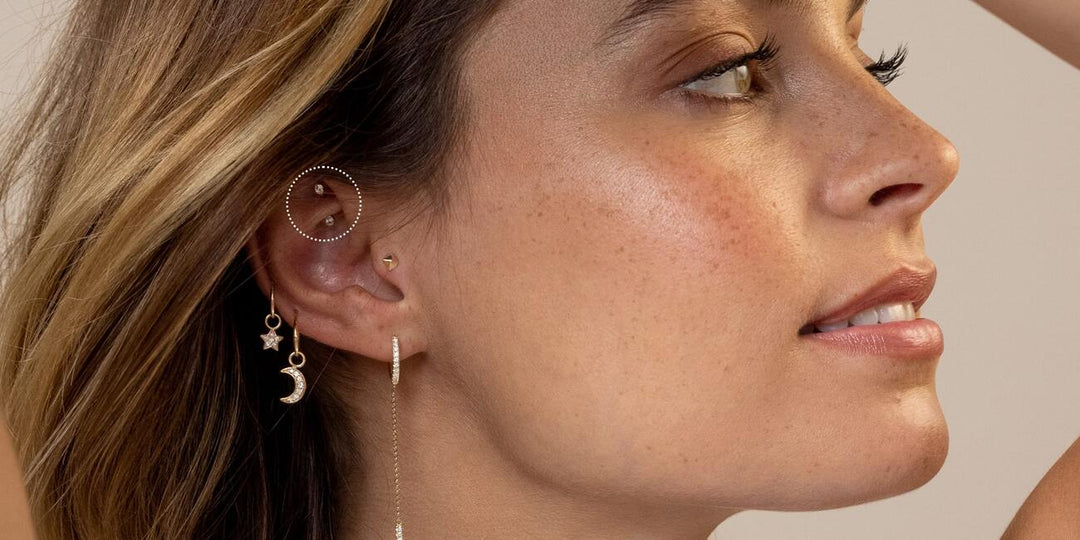The Dolphin Bite Piercing: Everything You Need To Know


The bottom lip provides a massive arena for tons of amazing piercing styles. Whether you want single, double, or even quadruple piercings, your lips can handle it, which is why we adore lip piercings.
Like a snake bite piercing, the dolphin bite piercing consists of two piercings beneath the bottom lip located equidistant from the center. Unlike the snake bite piercing, dolphin bites are located close together near the center of the lip. They are meant to emulate the look of the narrow mouth of a dolphin and look like how one might imagine a dolphin bite would appear.
The dolphin bites piercing heals similarly to any other lip piercing, but multiple piercings can make for more complicated healing, and their location might present some oral issues. Before you take the dive and get a dolphin bite piercing, here’s everything you need to know.
Related Products
View allHow Much Do Dolphin Bite Piercings Hurt?
Lip piercings, in general, tend to be a little more sensitive because of the number of nerve endings in this area, but most of the pain comes with the swelling and throbbing afterwards. Lips swell more than other areas, and this can lead to great discomfort during the first few days of healing.
Since the dolphin bite piercings are so close together, you could see more swelling than in double lip piercings that are further apart. It’s also incredibly easy to bite swelled lips, so it’s a good idea to stick to softer foods as your piercing heals.
Choosing an experienced piercer will help ease your piercing experienced; they’ll be able to conduct the procedure in a quick, expert manner, and they’ll guide you through the process for an easier time.
Dolphin Bite Piercing Healing Process
Lips typically take 2 - 3 months to heal, but they can take up to 6 months. It can be difficult to tell when the piercing has healed fully, and it will appear healed before it truly is, so talk to your piercer first before stopping aftercare practices.
Aftercare Rules
Dolphin bites piercings aren’t particularly difficult to heal, however, since they pierce into your mouth, you have to be vigilant with your aftercare practices in order to avoid infections caused by the bacteria in your saliva. Here are some things to keep in mind while you heal your dolphin bites piercing.
Take care of your teeth. When you first get pierced, your piercer will fit you with jewelry that’s large enough to accommodate swelling. This is important so that your jewelry doesn’t become embedded in the skin, but it also makes daily tasks, like eating or speaking, difficult. It’s a good idea to stick to softer foods as you get used to your new jewelry. Once your lips have returned to their normal size, you can talk to your piercer about fitting you with smaller jewelry pieces that will be simpler to navigate.
Don’t forget to clean the backside of your piercing. Your piercer will probably teach you about sea salt soaks (which will be important), but you can’t forget about the backside of your piercing. Since the jewelry sits on the inside of your mouth, it’s susceptible to the mass amounts of bacteria that love your saliva. Brush your teeth after every meal, and rinse your mouth out with a sea salt rinse. Don’t use mouthwash, since it contains alcohol, which is harmful to your new piercing.
Don’t move the jewelry. It will be tempting to play with your jewelry, especially as you’re getting used to it. Moving the jewelry too much can contribute to piercing rejection, and it can tear at the healing skin, encouraging infection and slowing healing. It’s best to leave the jewelry alone as your piercing heals for the best results. If you get crusties around the jewelry, you might be tempted to rotate the jewelry or pick the crusties off. This can also damage the tender new skin. Instead, gently soak the crusties with saline solution until the wash away on their own.
Dolphin Bite Piercing Jewelry Styles
You’ll most likely be pierced with a 16G needle. Lip jewelry styles typically feature a 5/16” barbell, but this could vary depending on your preference and lip anatomy.
Labret studs with a flat back are the most popular jewelry types for the dolphin bite piercing. You can choose standard ball ends or go a little fancier with opal or pearl ends. You can also add some flair with a cute charm. Flat backs are recommended since they sit flush with your skin and won’t hit your teeth as often.
Hoop styles are also seen in dolphin bites piercings. Seamless hoops will sit flush with the lip and won’t get in the way, like other hoop styles, but captive bead rings can offer a similar look with an easy-to-use bead that adds extra decoration.
Why Shouldn’t I Get A Dolphin Bite Piercing?
There are few anatomical reasons that would bar you from getting a dolphin bite piercing. Its location beneath the bottom lip makes it a fairly straightforward piercing option.
However, piercings around the mouth do have an increased risk of infection. If you can’t adhere to proper aftercare practices, you should choose a piercing that’s easier to heal.
If you tend to see a lot of swelling, you should think about getting the dolphin bite piercing one at a time. Simply wait a few days between piercings.
The jewelry for the dolphin bite piercing will bump against your teeth and gum lines. This contributes to issues like receding gum lines and enamel wear, which could lead to tooth decay. In some cases, it could cause your teeth to move. If you have oral issues, then you should consider a piercing away from the mouth.
How Much Will It Cost?
Since you’re getting two piercings, the dolphin bite piercing will likely cost more than other single piercing types, but you likely won’t have to pay for two piercings. You can expect to pay anywhere around $50 - $100.
Choose a quality piercer with experience. Visit their studio beforehand to make sure that it looks clean. Never use a piercer that uses a piercing gun. The cost of the jewelry likely won’t be included in the piercing price, but you shouldn’t skimp on the quality of the jewelry to keep the price low. Cheaper metals contain alloys that can irritate the skin, even if you’ve never had issues with metal before. Choose 14k gold or quality titanium for your initial jewelry.










